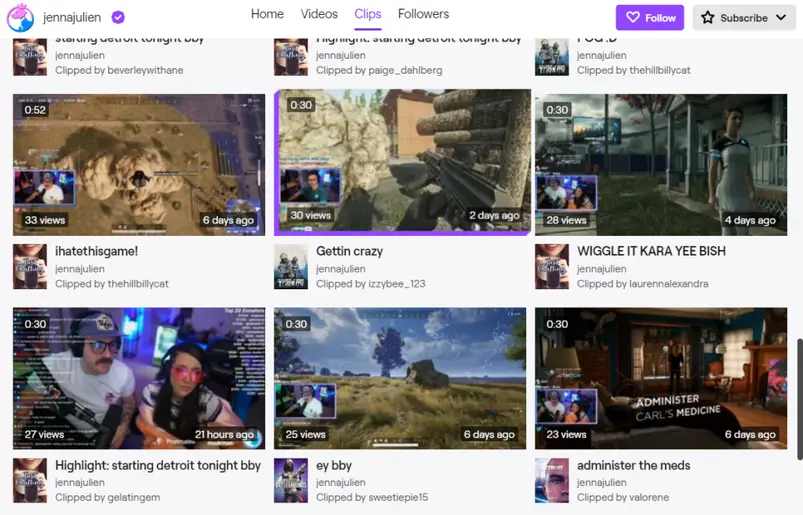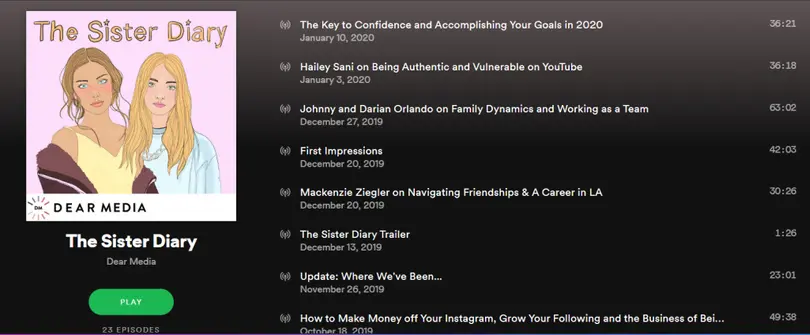Going into 2020, Generation Z represents the largest generation of consumers yet: accounting for $29 billion in direct spending already. That number doesn’t even begin to scratch the surface, though, considering 93% of parents today say their Gen Z children influence household purchases. For marketers, now is the time to know Generation Z.
Changing the Game: Influencer Marketing for Generation Z:
THE QUICK FACTS
- Gen Z (a.k.a. Zoomers) were born between 1995-2010. So the oldest are turning 25 this year while the youngest are turning 10.
- Generation Z is on track to become the most educated and most ethnically diverse generation of Americans ever.
- In the US, just 13% of Generation Z lives in rural areas. The majority live in metropolitan areas.
- Also known as “Digital natives”, Gen Z youth are immersed in social media. They spend an average of 2 hours and 55 minutes per day on social media, more than any other generation (World Economic Forum).
- Gen Z are multi-device and multi-tasking individuals that live in multiple realities (digital, real-life, local, global) which makes them tolerant of differences but also more concerned with truth.
- Generation Z ‘s common values are inclusion, authenticity, and pragmatism.
Why target Gen Z?
As stated before, Generation Z’s purchasing power is not negligible (Between $29 - $144 billion already). While they may be digital natives, Generation Z likes to shop in-store more than Millennials and Generation X (which is a big opportunity for brick and mortars!)
What’s more, Gen Z is also changing the way we shop. Remember, they’re pragmatic. They’ve always had the internet at their fingertips which means they’re looking for deals first-- not brands. A Gen Z consumer is not above thrifting!
Values is the name of the game. Gen Zers are thrifty but they will however pay extra for sustainable products. For this hyper-connected generation, shopping is a way to assert their values and they’re reportedly more concerned with social activism than any group before them. Marketers, pay attention. This is the future calling!
Gen Z and Influencer Marketing: A match made in heaven.
- Gen Z is onboard with influencers. Nearly two-thirds report following them and 50% say that they trust their recommendations.
- Though, they’d prefer brands to feature more relatable creators in their ads, not celebrities.
- They don’t just like influencers… they want to be them, suggesting paid sponsorships are something the average ‘Zoomer’ endorses.
So, Gen Z constantly uses social media. They’re comfortable with influencers and they care about the social context of their products. It seems influencer marketing is THE way to reach them.
That being said, influencer marketing as we know it (the platforms, personalities, and collaborations) won’t click with this new generation.
How is Gen Z changing the rules of the game?
First things first, know these 5 platforms to reach Gen Z where they’re at:
- TikTok. This short-video app is where all the trends begin.
- Twitch. A streaming platform for e-gaming, like cable TV for Gen Z.
- Spotify. Their source for new music and popular podcasts.
- Instagram. Stories, finstas, and memes have turned this app on its head.
- YouTube. Old but gold, Gen Z uses YouTube for entertainment and education.
Time to dive deeper! Let’s examine some examples of Gen Z influencer content from each platform.
TikTok
Probably the most important application to know, given how quickly its trends spread to other platforms. Gen Z prefers ads with people that “look like them” and TikTok really showcases this: influencers aren’t highly edited, in fact, their content blends seamlessly into the mix. Can you spot the personality with +17 million followers out of the bunch below?
Viral trends on TikTok have a simple recipe: A popular concept will come about which different users will interpret. Like the idea of using a kid’s song for learning the months of the year to visually represent how your love life went in 2019 (see above). Seems silly? Ingenious? Well, viral trends like these sum up Gen Z’s desire for authenticity and inclusiveness. Anyone can participate! Influencers are just TikTok’ers who have mastered the formula which means they’re a go-to resource for brands in search of viral exposure.
Tips for collaborating with a TikTok influencer,
- Develop campaigns which encourage user-participation. While influencers have great visibility on TikTok, it’s a platform that moves lightning fast so one advertisement alone won’t work. A ripple effect creates real resonance.
- Stay on top of trends. Here’s a quick primer: #respectthedrip, #vibecheck, #imbaby.
- Don’t forget to disclose partnerships clearly. Just because it’s a new platform doesn’t mean the old FTC rules don’t apply. (Example: this promotional content blurs the lines!)
- Maximize audience reach and media value by partnering with multi-platform creators (for example, a YouTuber / TikTok creator.) Unsure where to start? Almost all influencer marketing software solutions can offer this information.
Twitch
Video games are not what they used to be. Twitch, a site where users can stream as they play, has proven that Gen Z loves to watch “Esports”. It’s a $1 billion dollar industry with international competitions, brand sponsorships, major charity partnerships, and so much more. In 2018, more people watched gaming content than HBO, Netflix, Hulu, and ESPN combined! Luckily, influencer marketing has proven effective in harnessing these die-hard followings.

Source: twitch.tv
Tips for collaborating with a Twitch influencer,
- This platform is highly relevant for young men. In fact, 94% of viewers are male so plan campaigns accordingly.
- Popular games include Fortnite and League of Legends but there’s also channels like “Just chatting” dedicated to non-gaming content. Consider all the possibilities!
- Influencers on Twitch have lots of ways to make money (from ad revenue and viewer donations to competition winnings) so they’re more ‘self-sufficient’ than other types of influencers. This means brands will have to approach them with intriguing, mutually-beneficial partnership offers.
Spotify
If Twitch is Gen Z’s cable TV then Spotify is their radio. This platform has become a discovery tool for podcasts, an increasingly popular pastime (and unlikely opportunity for influencer marketing). According to Spotify’s website, their podcast audience doubled in 2019! That’s an audience reach of 200 million people. According to Statista, 1/4 of those listeners are under 24 years of age! So what does influencer marketing sound like?
Tips for collaborating with Spotify Podcasters,
- Know your podcast metrics like CPE (cost per mille) for downloads and CPA (cost per acquisition) for referral programs.
- The majority of podcast ads are voiced by the podcast host, not agency-produced. Embrace the “native” ad format by giving your influencers a real story to tell: think interactive, not interruptive. If you just provide a script, listeners will surely tune out.
- A simple trick for finding influencers with podcasts is using a keyword search. In an influencer marketing platform like Upfluence, we were able to identify +3,500 influencers in the US who have podcasts.
As a platform, Instagram isn’t new-- but the way Zoomers use it is. After all, this is the most photographed generation ever! The result? A cohort of youth which operate like influencers. Nowadays, everyone shares their brand experiences, curates their feed, and hunts for the perfect “golden hour” lighting. So how can marketers navigate this “picture perfect” platform?
Tips for collaborating with a Gen Z Instagram influencer,
- Pitch collaborations which satisfy Gen Z’s needs. They should either A) offer a bargain deal B) spark joy or constitute self care C) align with their ideals on diversity or sustainability D) offer personalization. In a culture where radical inclusivity reigns, many youth feel pressured to define themselves as different in order to stand out.
- Less is more. When it comes to sponsored content, we’ve discovered at Upfluence that “saturation rate” is a key metric to take into consideration when recruiting. Audiences lose interest in influencers that post too many ads so 1) prioritize personalities who know how to strike a balance 2) compare the engagement rates on their organic posts vs sponsored ones 3) once recruited, don’t exhaust their followers with too many sponsored posts.
- Transparency goes a long way. As previously stated, Gen Z is inundated with traditional ads, influencer ads, and now, ‘wanna-be’ influencer ads. Brands can cut through the noise by investing in quality over quantity but also highlighting influencers on owned channels to lend the partnership credibility. (And perhaps add some value to their offer when recruiting new influencers!)
YouTube
Gen Z turns to YouTube when they want entertainment or education-- influencers provide both. Unlike Instagram, which is populated by masses of small influencers, subscribers tend to concentrate around fewer, more monolithic accounts on YouTube. This might be because the editing techniques required to create videos these days are quite advanced: Many YouTubers invest heavily in their equipment, build home-studios, and join professional ‘multi-channel networks’ to leverage their media value. Brands should be prepared for more negotiation: YouTubers are associated with higher collaboration fees but also higher return on investment.
Tips for collaborating with YouTubers,
- Work with shooting stars, not falling comets. Big YouTubers can have steep collab fees. Our strategy is to use performance data (engagement over time) to select mid-range to micro YouTubers who show promise of going big.
- Their content consumption is constant but the format varies. TikTok and Instagram reveal Gen Z’s short attention span but podcasts and streaming show us they can be drawn into longer media when done right. When collaborating with YouTubers, opt for longer videos with more production value then ask for outtakes to circulate on Stories or TikTok.
4 Final Takeaways
- Interconnectivity defines Gen Z influencers. This means there is gaming content circulating on TikTok, Instagram influencers starting podcasts, YouTubers reviewing memes, etc. Smart brands will leverage this for multi-platform campaigns.
- Knowing which influencer will bring the most value to your audience requires generational awareness. We know Gen Z is different: from their purchasing motivators to their favorite platforms. Though, it’s important to keep in mind that the age of the influencer doesn’t necessarily equate to the age of the audience. Always verify ahead of time with audience analytics.
- In a digital world, Gen Z craves authenticity. The types of conversations in the comments are more important than the likes. The depth of the reviews are more important than the photo. Look for communities that engage with content, share it with their friends, and store it away for inspiration. Remember: Campaigns should be interactive, not interruptive. Real-life, long-term partnerships inspire the most trust. Gen Z wants true brand ambassadors, not cheap “one-off posts”.... Being digital natives, their BS radar is strong!
- Finally, Gen Z is going to be the most influencer-friendly generation yet. Making and editing TikToks is considered playing. Schools have clubs dedicated to esports. Young adults do creative side hustles. The combination of economic precarity and tech-culture has made Gen Z quite industrious, creative, and accepting of this type of work. In fact, many wish to be influencers themselves.






